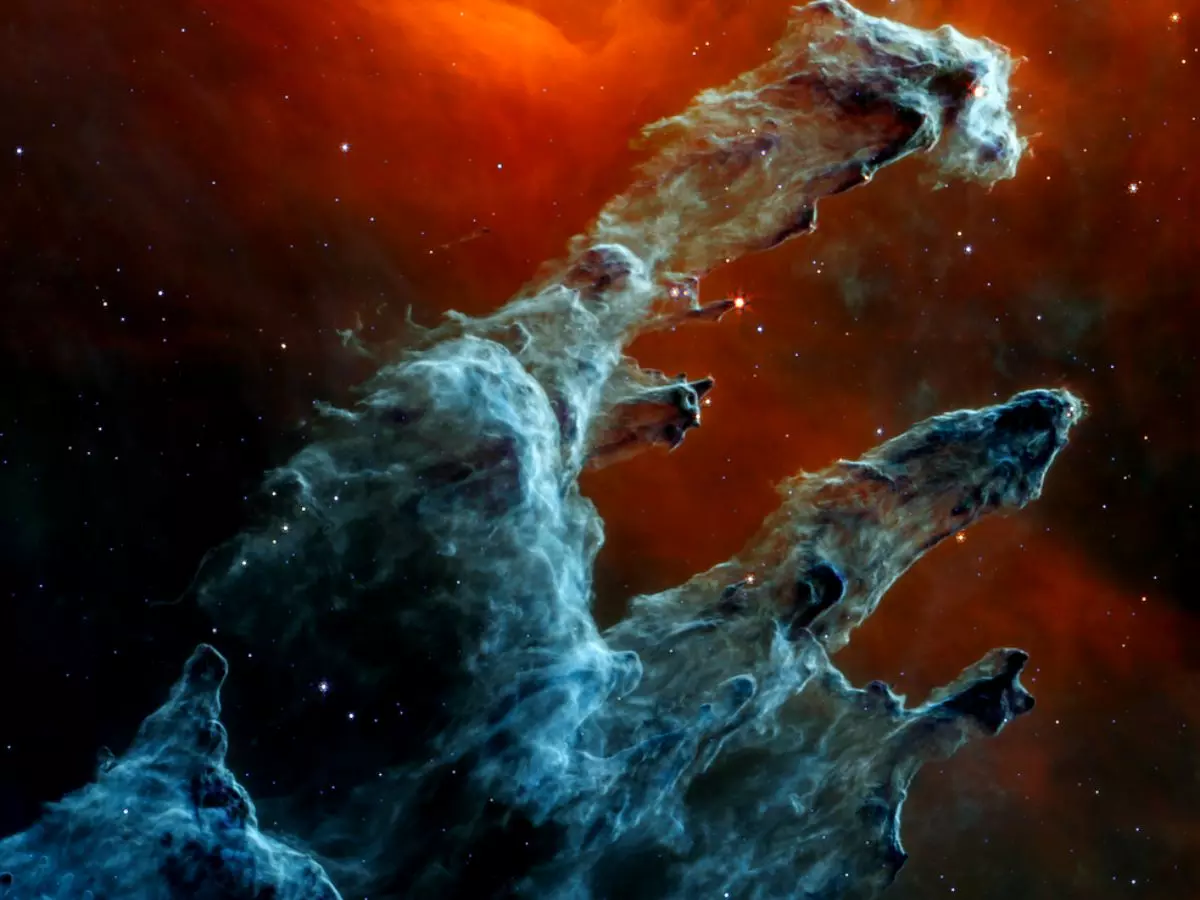James Webb Space Telescope Captures Haunting Image Of The Pillars Of Creation
The image shared last week was captured on JWST¡¯s Near Infrared Camera (NIRCam) which allowed a glimpse through the columns and dust that showed us thousands of new stars in the region in stunning detail.

NASA¡¯s James Webb Space Telescope has shared a new image of the ¡®Pillars of Creation¡¯ that looks rather ominous, perfect in time for Halloween.
 NASA
NASA
The background is donning shades of orange and black, captured using Webb¡¯s Mid-Infrared Instrument and according to NASA, this new image is able to offer a fresh perspective towards the region with a focus on the gas and dust present there.
To the unaware, the Pillars of Creation is in the Eagle Nebula, around 6,500 light years away. For those who¡¯re wondering how massive this truly is, NASA offers a perspective -- the red star near the topmost pillar is larger than the size of our entire solar system.
The image shared last week was captured on JWST¡¯s Near Infrared Camera (NIRCam) which allowed a glimpse through the columns and dust that showed us thousands of new stars in the region in stunning detail.
Hauntingly beautiful in any light, we can¡¯t help but return to the Pillars of Creation over and over. And each time, we deepen our understanding of this region. With this new MIRI image, astronomers now have higher resolution data in mid-infrared light than ever before. pic.twitter.com/wfY8tp3I8y
¡ª NASA Hallo-Webb Telescope ??? (@NASAWebb) October 28, 2022
However, when captured using MIRI, the stars weren¡¯t bright enough to shine through at the wavelengths MIRI is able to focus on.
Mid-infrared light is amazing for observing gas and dust in extreme detail. The densest areas of the dust are the darkest shades of grey. The red region towards the top that forms a V shape is where the dust is diffused and cooler.
In case you were wondering why background galaxies are not visible here, it¡¯s because the interstellar medium in the densest part of the Milky Way¡¯s disk is too swollen with gas and dust to allow their distant light to penetrate.
Keep visiting Indiatimes.com for the latest science and technology news.
